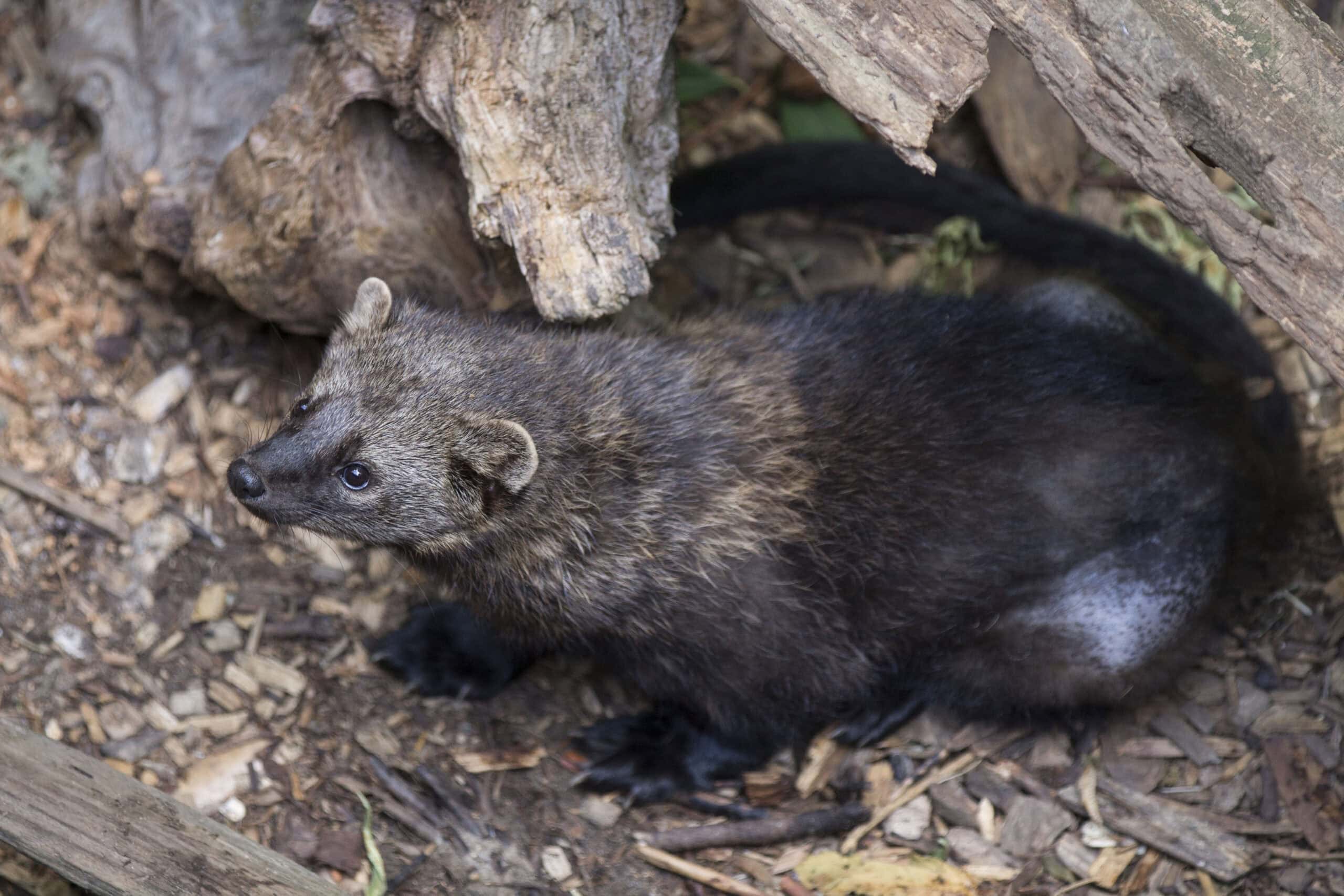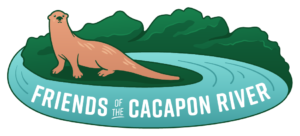
by Peter Wood
A continuing series about the people working to improve and protect the Cacapon River and Lost River Watershed and their love for the river.
West Virginia forests provide the ideal environment for some of the most diverse wildlife in the Eastern United States. Many of those animals are found along the heavily forested banks of the Cacapon River. Otters, beavers, muskrats and minks. Bats, birds and black bears. Coyotes, foxes, bobcats and raccoons. And, well, deer.
Chelsey Faller has seen a few unique creatures in her work with the West Virginia Division of Natural Resources (DNR) in the Cacapon Watershed. Like the forest-dwelling fisher.
“Wherever you have a decent patch of forest, you might have fishers around,” Chelsey explained. “It’s rare to see them as they can be pretty elusive.” Growing to the size of a large house cat, they are sometimes called a fisher cat, although the native carnivorous mammal is not a cat.
“I was out in the woods a few weeks ago and saw one,” she smiled. “It was looking down at me from a hole in the tree.” The fisher is one of the few animals able to successfully prey on porcupines, another rare animal in the watershed.
Chelsey is a wildlife biologist for District 2 of the West Virginia DNR, which includes the eight counties in the Potomac Highlands and Eastern Panhandle.
“I cover the Wildlife Management Areas in the district,” Chelsey said. “We work on research projects and anything to do with game species.” DNR maintains 96 wildlife management areas across the state, which provide visitors and residents with excellent outdoor recreation opportunities such as hunting, fishing, and trapping.
“The Wildlife Management Areas in the Cacapon Watershed include Edwards Run, Warden Lake and portions of Sideling Hill, Short Mountain and,” Chelsey detailed. “These areas provide beneficial undeveloped forests.” Other substantial forested public lands in Cacapon Watershed include the George Washington National Forest, Cacapon Resort State Park, and Lost River State Park.
“We do know a lot of aquatic mammals – otters, beavers, mink, muskrat – rely on the riparian zones being minimally developed,” Chelsey explained. “A lot of our watershed impacts are coming from development.” Undeveloped forests are critical not only to diverse wildlife but also to the health of the Cacapon River.
“With development, you have so much more area with impervious surface where the water can’t seep into the soil, causing more runoff,” Chelsey remarked. “You get bigger pulses of water through the creeks and streams. So you get higher highs and lower lows.”
Heavy rains will wash away loose soil from gravel roads, disturbed land, and bare riverbanks, turning the clear waters of the Cacapon River muddy. That loose soil, or sediment, is one of the worst problems for the Cacapon River. Sediment settles on the river bottom, smothering aquatic plants and bugs. It also buries fish eggs, reducing healthy fish populations.
Forested riverbanks help reduce those extreme water levels and are essential to water quality, aquatic health and habitat diversity. Riverbanks lined with trees, shrubs, and grasses create an underground network of deep root systems that hold soil in place and prevent riverbank erosion after heavy rains and flooding.
Chelsey and other DNR biologists are working to conserve and manage habitats for various wildlife species and improve public access to these resources in wildlife management areas. Those efforts on research projects, managing forests, and maintaining food plots are vitally important to wildlife, forest health and the Cacapon River.
The benefits of those protected forests are many. The treelined banks are the perfect habitat for the elusive creatures that peer down from the trees, watching kayakers paddle down the Cacapon River or wildlife biologists doing their good deeds.
Peter Wood is a board member of the Friends of the Cacapon River with a mission to preserve, protect, and promote the environmental health and scenic character of the Cacapon River and its watershed.
Photo caption: Fisher, a member of the weasel family, can be found living in the Cacapon River watershed. (Photo credit: Emily Brouwer, National Park Service).
